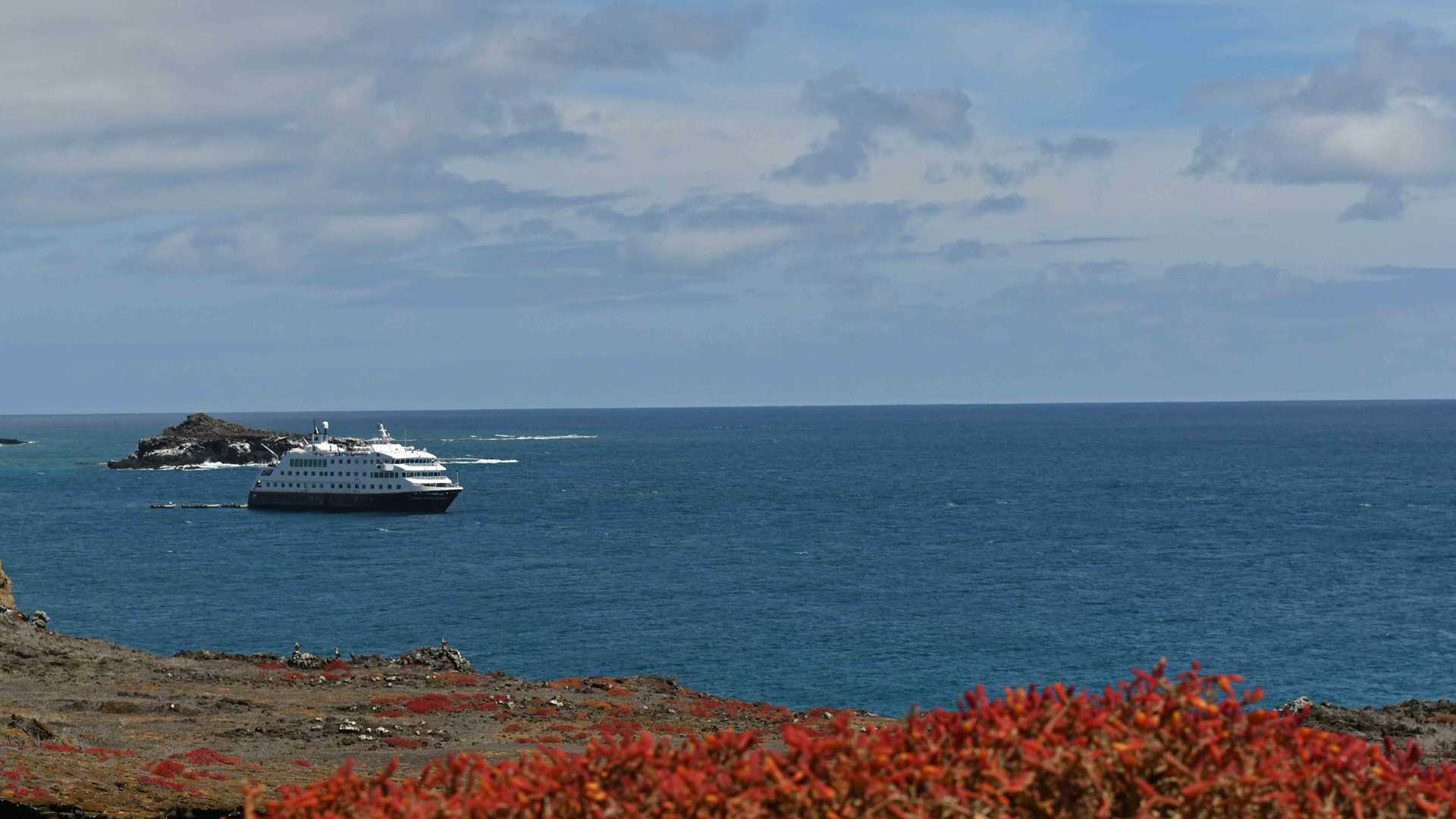It is our last day of adventure in Galapágos. Today we are at San Cristobal Island, the oldest of the 17 islands forming this archipelago. The morning is warm and the sun is shining the moment it crests the horizon. Every day is the same here at the equator, the sun rises around 5:45 a.m. and sets around 5:50 p.m., no longer day or longer nights happen here like other places at different latitudes. Therefore, here we are, jumping from our Zodiacs out on the beach to explore Punta Pitt. From a distance, you notice that the island looks very eroded-- the hills, the summit of the mountains, and the shoreline--because about five million years ago, San Cristobal emerged above the ocean and formed. We started our walk along the impressive landscape, and as soon as we reached the top of the main volcanic cone, the view was astonishing. In the last few years many blue footed boobies came to settle down and now you see along the trail many couples nesting. Nazca boobies and red-footed boobies also live here. This is now the only place where you can see the three types of boobies found in the Galapágos. At the end of the path the land is covered by sesuviums and nolanas, two of the several carpetweed plants surviving in this arid ecosystem. Sesuviums are green, but during the dry season, they turn reddish and purple, making a great contrast with the black lava and the brown ashes. As soon as we finished the walk, we came back to the beach for swimming, paddle boarding, or just resting on the sand to admire sea lions and sea birds passing by.
Later we moved to the north side of San Cristobal to Cerro Brujo, a magical beach covered in sand fine as powder, surrounded by green saltbushes, and turquoise blue water with an abundance of sea lions. A very relaxed walk was taken to explore the beach along the coast. Sea birds were eating and flying around on the lagoon made by brackish water while many birds such as plovers and sandpipers were feeding on the rich ooze, and some lava gulls were eating a dead baby sea lion. Everywhere you looked the animals were buzzing with activity, all in an effort to survive. For them every second is vital to make it, to ensure the survival of their species. Galapágos is like no other place on earth. Animals are fearless-- they’ll approach you so close; the landscape is unique--beautiful but dramatic; the sky is always with intense colors; and the ocean offers calmness, quietness, solitude, and harmony.
“We are not ready to go back home,” some of our guests say. It is our last day, so many memories, many incredible moments, and experiences that will be forever in our hearts.
At the end, we admire the colorful sunset to say goodbye to this magical archipelago. Have a nice trip back home!







